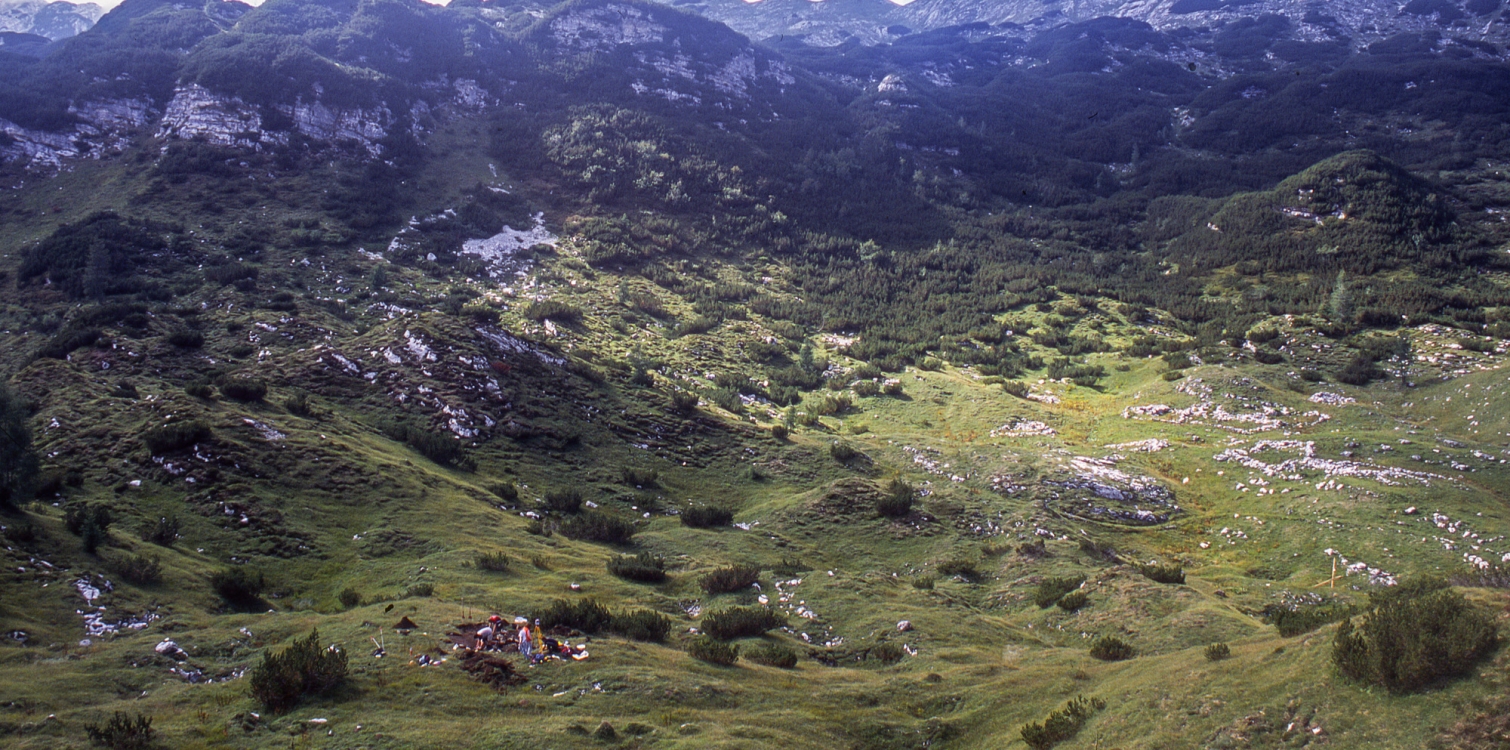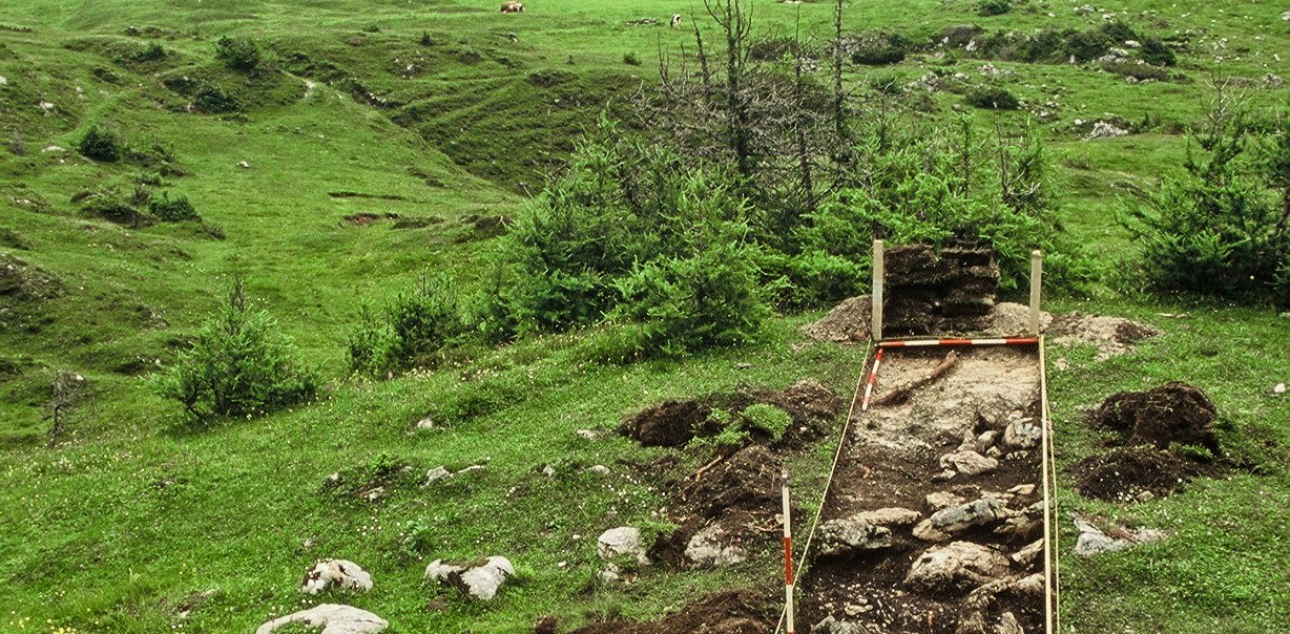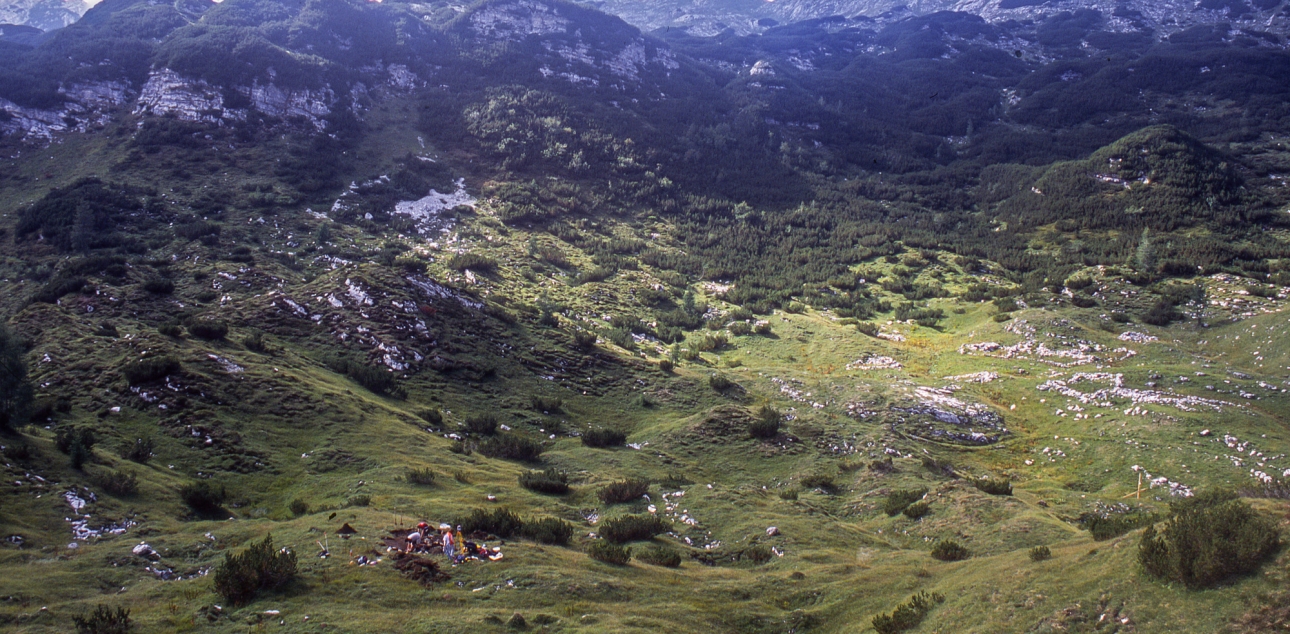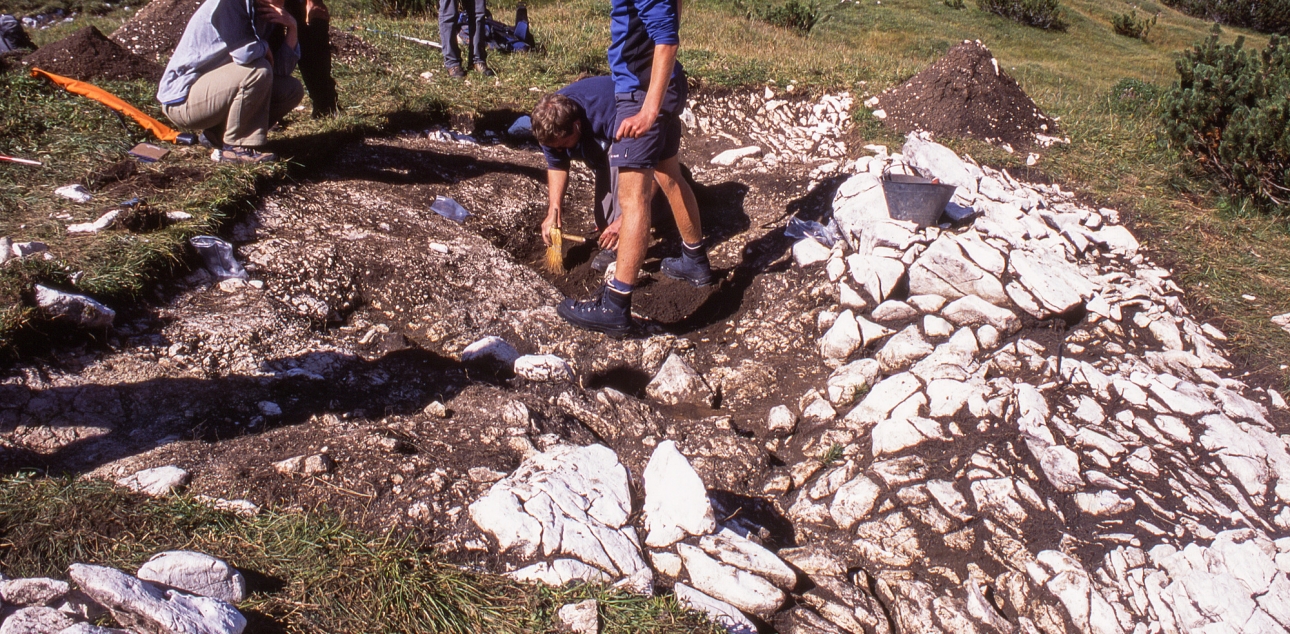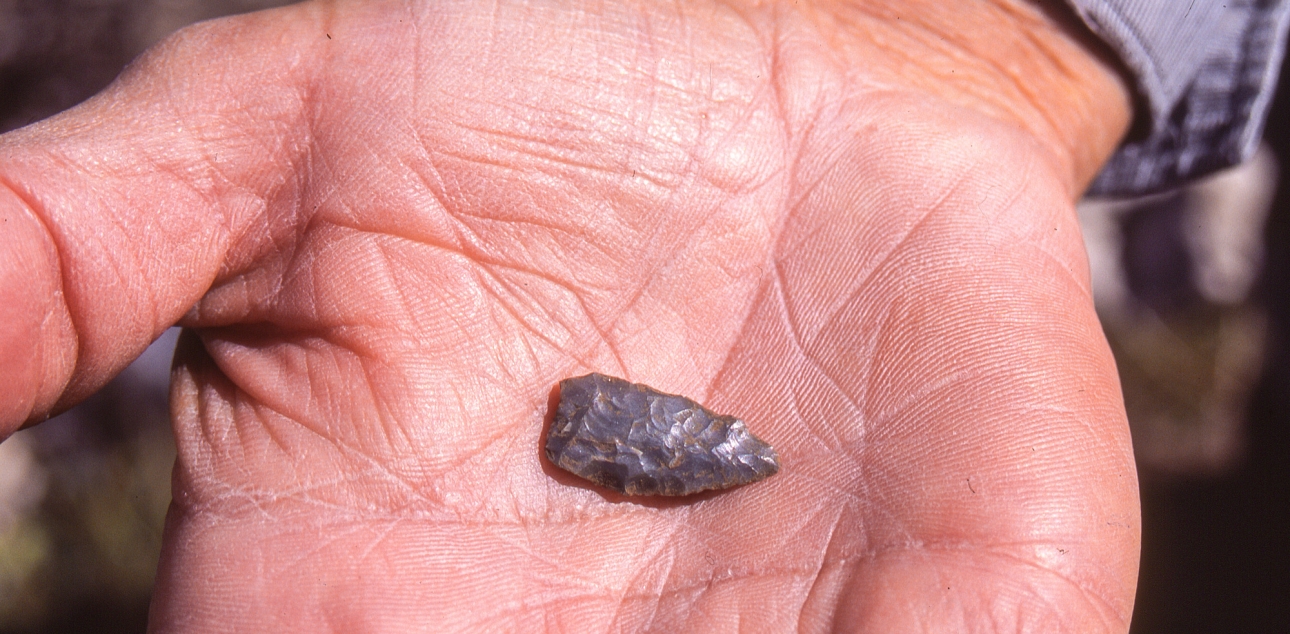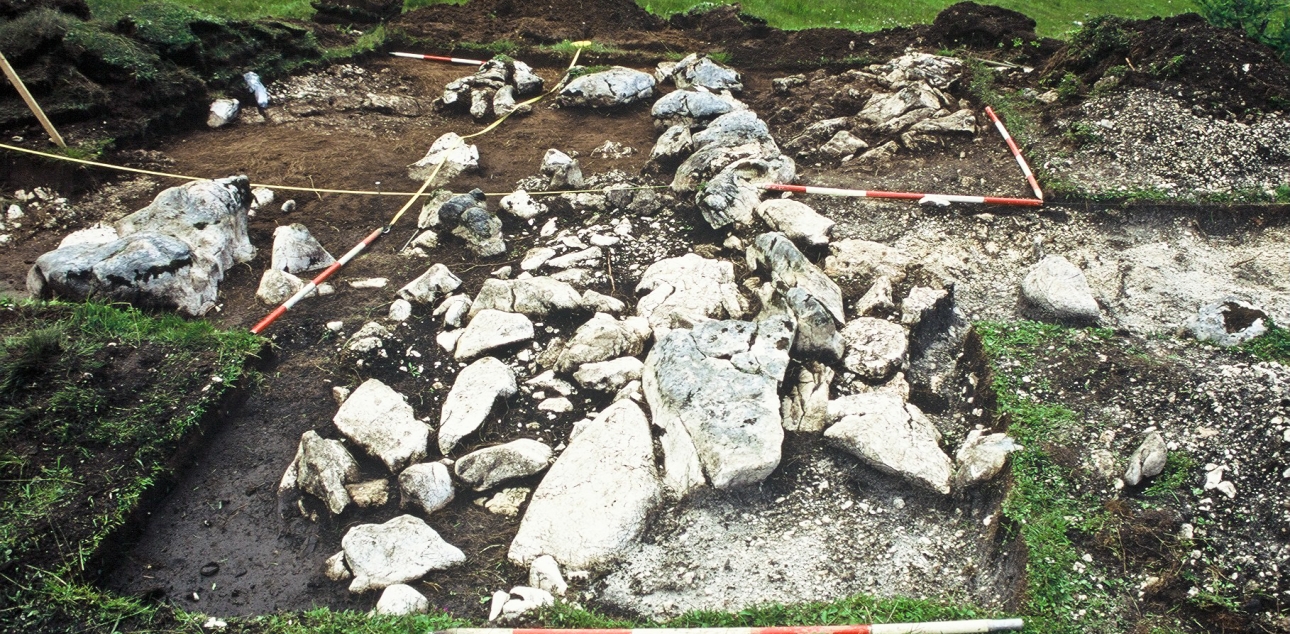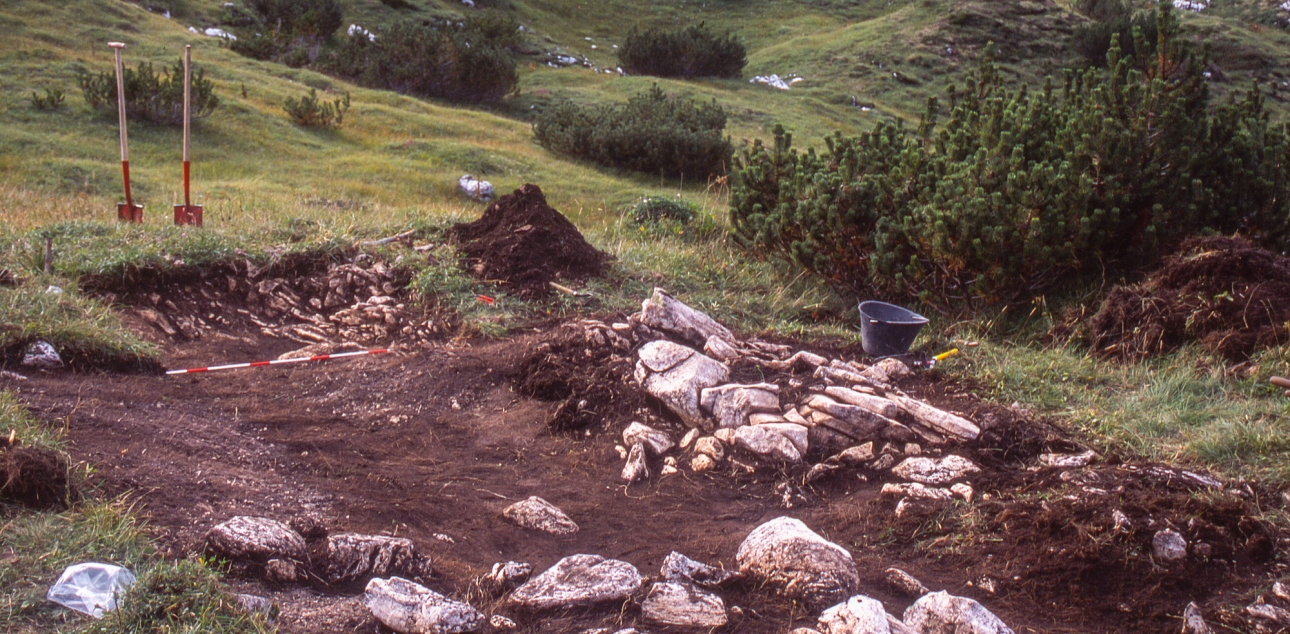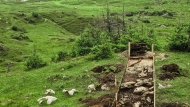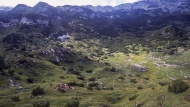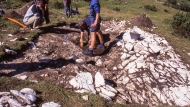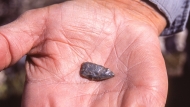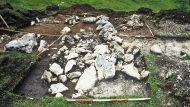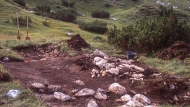Today, however, people come to the mountains in search of spiritual experience as another product of the area's rich cultural heritage.
Until recently there was a widespead belief that the area of the Eastern Julian Alps had been sparsely populated until the Middle Ages. However, contemporary archaeological studies show that people visited mountains very early in history. The oldest human traces dating back 3,600 years, to the Bronze Age, were discovered on the plateaus of Lepa Komna and Vogel. No known finds date back to the Early Iron Age, most likely due to climate changes.
The economic growth in the Roman period was also reflected in commercial exploitation of high-altitude mountains, mostly in the form of mining and grassland farming. The bronze bell found in Vodene Rupe testified to the existence of the latter. A number of settlement nuclei have been found on the Pokljuka plateau, Komna and Lower Bohinj Mountains. Best researched are the pastures of Klek, Vogel and Pečana, which have been continuously populated until today.
Most Stone Age sites lie on the Soča side of the national park, in particular in the Krn range, while the Gorenjska side of the park is rich in finds from the Bronze Age, Iron Age, and the Roman period (antiquity).
Iron route
The archaeological sites of the national park, marked by rich cultural and natural heritage, are part of the Železna pot (Iron Route), a mountain hiking trail which was executed in the framework of an international project Železna pot.

